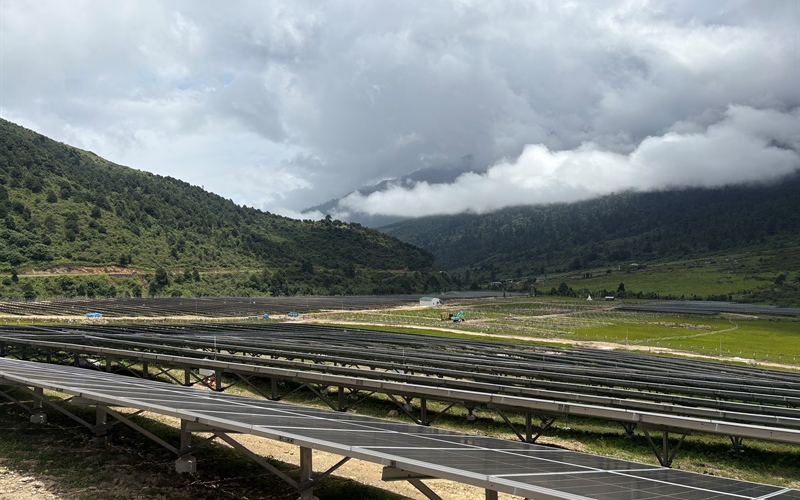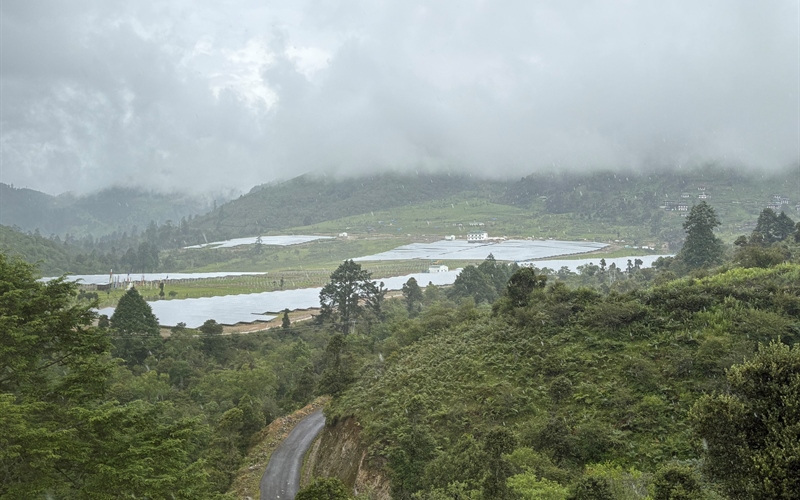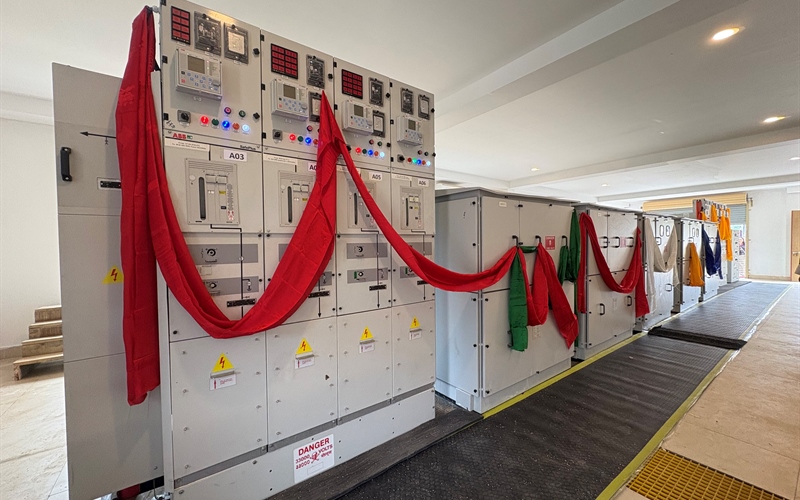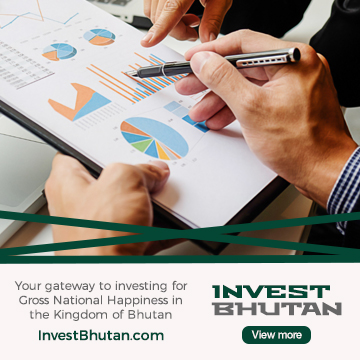Bhutan’s Biggest Solar Project Yet: A Giant Leap Toward Energy Security
As Bhutan’s glaciers melt and hydropower becomes increasingly vulnerable to climate change, the Kingdom is turning its face toward the sun—literally. With rising temperatures and erratic rainfall threatening its energy lifeline, Bhutan is quietly investing in solar power as a resilient alternative to secure its future.

Bhutan inaugurated its first-ever utility-scale solar photovoltaic (PV) power plant on July 19 in Yongtru village, Sephu Gewog (Village Block), in Wangdue Phodrang in central part of Bhutan which is about five hours journey from the capital, Thimphu. Taking a major step forward in the country’s journey toward clean and diversified energy.
The new solar power plant is Bhutan’s largest grid-connected solar project to date. It is spread across 44 acres of land and fitted with around 26,500 solar panels. Once fully operational, it will have the capacity to generate up to 22.38 megawatt-peak (MWp) of electricity.

This capacity will help meet domestic energy demand, especially during winter months when Bhutan’s hydropower generation declines due to low river flows. The project is being developed into two phases. The phase-I is operational with 17.38 MWp and is expected to generate 25 million kilowatt-hours (kWh) annually. The phase-II which adds five MWp with around 8,700 additional solar panels, is scheduled for commissioning in September.
The groundbreaking ceremony took place on July 11, 2023, on the only available land after the government was unable to secure a site elsewhere in the country. The project is built on former grazing land for Yongtru and Longmaed villages.

Funding of the project
The total project funding includes a USD 10 million grant and USD 8.26 million concessional loan from Asian Development Bank (ADB). There is additional funding from the government with a contribution of USD 0.99 million.
Originally planned with a capacity of 17.38 MWp spread over 65 acres, the project’s scope was expanded to 22.38 MWp after surplus funds became available. At present, the solar plant occupies 63 acres, leaving 2 acres still unused.
Why this project matters?
Bhutan has long relied on hydropower as its main source of electricity, but climate change is making river flows more unpredictable. This solar project is part of Bhutan’s plan to diversify its energy mix and reduce dependence on a single source.
It also supports the government’s broader target of reaching 500 MW of solar power by 2025 and 1,000 MW by 2030, helping strengthen national energy security and sustainability.
This project not only marks Bhutan’s entry into utility-scale solar energy but also reflects its commitment to climate resilience and sustainable development. The Renewable Energy Management Master Plan 2016 estimates Bhutan’s solar power potential at 12 gigawatts.
The plant is expected to cut Bhutan’s annual electricity imports by around 25 million units—an important reduction during winter months when hydropower output usually drops. Bhutan imported nearly 999 million units of electricity in 2024, at a cost of Nu 3.4 billion.

More big solar projects on the horizon
Druk Green Power Corporation Limited (DGPC) awarded the contract for the 120 megawatt-peak (MWp) Jamjee Solar Photovoltaic Project in Thimphu to the HILD-Rigsar Consortium. This project will be Bhutan’s first and largest grid-connected utility-scale solar power plant, marking a significant leap in the country’s renewable energy ambitions.
Beyond Jamjee, several other large-scale solar projects are in development to boost Bhutan’s clean energy capacity. Notably, planned installations in Apa Amai Pang (Dagana) and Tang Valley (Bumthang) each aim for capacities exceeding 100 MW. These upcoming projects underscore Bhutan’s commitment to diversifying its energy sources and strengthening energy security.
Community benefits beyond energy
Beyond generating clean electricity, the project has brought tangible benefits to more than 22 affected households in the area. These include the blacktopping of a farm road, plantation efforts covering 7.5 hectares, and ongoing work to improve drinking water supply. Additionally, construction is planned for a new road leading to Longtoed village and a community hall, further enhancing local infrastructure and quality of life.
Initially, the Sephu community had concerns about the mega solar project, but now, seeing its benefits, the residents are pleased and actively participated in the project's commissioning celebration.
Looking ahead: a brighter, greener future for Bhutan
Bhutan’s leap into utility-scale solar energy marks not just a milestone in its renewable journey, but a bold step toward energy resilience and climate action. With groundbreaking projects like the Sephu solar plant and the upcoming Jamjee initiative, the country is actively diversifying its power sources to reduce reliance on hydropower and imports.
Beyond clean electricity, these developments bring valuable community benefits and strengthen local infrastructure, showing that sustainable progress can be both inclusive and impactful.
As Bhutan continues to harness the power of the sun, it sets an inspiring example for the region—lighting the way toward a more sustainable and self-reliant future.






